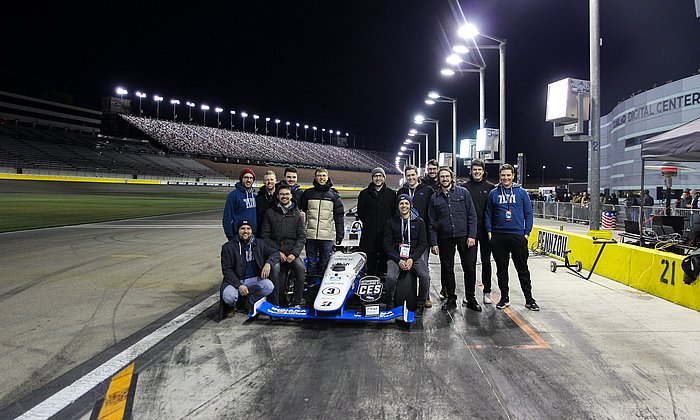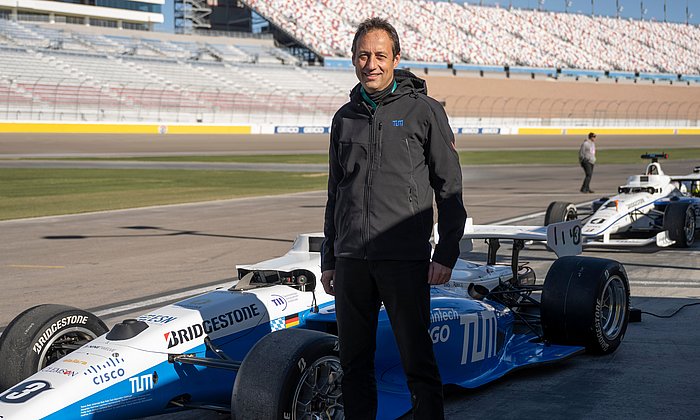TUM Autonomous Motorsports wins spectacular race in Abu Dhabi
Victory for TUM AI racers on Formula 1 track

In the final, with the four fastest vehicles in qualifying, the system developed by three professors, ten doctoral students, and five Master's students at the TUM Chair of Automotive Engineering was able to prevail against strong competition, mainly from Italy. In front of 25,000 spectators on Saturday evening, the teams from the Università Politecnico di Milano, Università degli Studi di Modena e Reggio Emilia and Constructor Universität Bremen had to overtake the car in front in a pursuit race.
There were numerous problems and crashes from all teams in qualifying races. TUM managed to solve these within a few hours. In the time trial, the TUM team only achieved third place for technical reasons and started the final from an unfavorable position because overtaking maneuvers on this track are already tricky for human drivers. However, it was able to perform the world's first spectacular autonomous overtaking maneuver on a Formula 1 track and then took victory on a fast lap. The crown prince of Abu Dhabi, Muhammad bin Zayed Al Nahyan, took over the award ceremony.
A milestone in autonomous driving
Prof. Markus Lienkamp from the TUM Institute of Automotive Technology sees this success as a milestone in autonomous driving: "Our team was able to move the vehicle at the limits of driving dynamics, detect other vehicles, and overtake them in a very short time. This brings us one step closer to replicating human driving." Team leader Simon Hoffmann said that the harmony within the team was a critical success factor: "Our work ethic, standing up for each other, and the resulting team spirit also carried us through weak phases and led us to success."
TUM President Prof. Thomas F. Hofmann followed the race via live stream: "I was rooting for our team until we won - because they deserved it! Time and again, it is the combination of theoretical and methodological expert knowledge and practical, engineering systems integration, intellectual class and team spirit, curiosity and a can-do culture that inspire our students and talented scientists to such top performances. The entire TUM is proud of the winning team. They are a shining example worldwide of the future viability of our country."
Bavaria's Minister of Science Markus Blume said: "Expertise, ambition, spirit: the TUM AI Racing Team combines everything that makes a successful team. Congratulations on this spectacular success in Abu Dhabi! Autonomous driving is a real promise for the future - just like the TUM team! A lot has to go right for top performance in research and development. With our AI offensive as part of Hightech Agenda Bayern, we are creating the right framework conditions."
The state organizer, A2RL from the United Arab Emirates, had announced this competition in order to hold an actual Formula 1 race with autonomous vehicles for the first time. All vehicles are based on a Dallara racing car and are equipped with LaSAR, RaDAR, cameras, and numerous other sensors and computers to record the track and competing vehicles. Each team has programmed its own software code to localize itself on the track, move the vehicle at the limit, and overtake competitors.
Technical University of Munich
Corporate Communications Center
- Ulrich Meyer
- presse@tum.de
- Teamwebsite
Contacts to this article:
Prof. Markus Lienkamp
Technical University of Munich (TUM)
TUM School of Engineering and Design
Institute of Automotive Technology
Munich lnstitute of Robotics and Machine lntelligence (MIRMI)
Tel: + 49 89 289 15353
sekretariat.ftm@ed.tum.de
https://www.mos.ed.tum.de/en/ftm/home/




